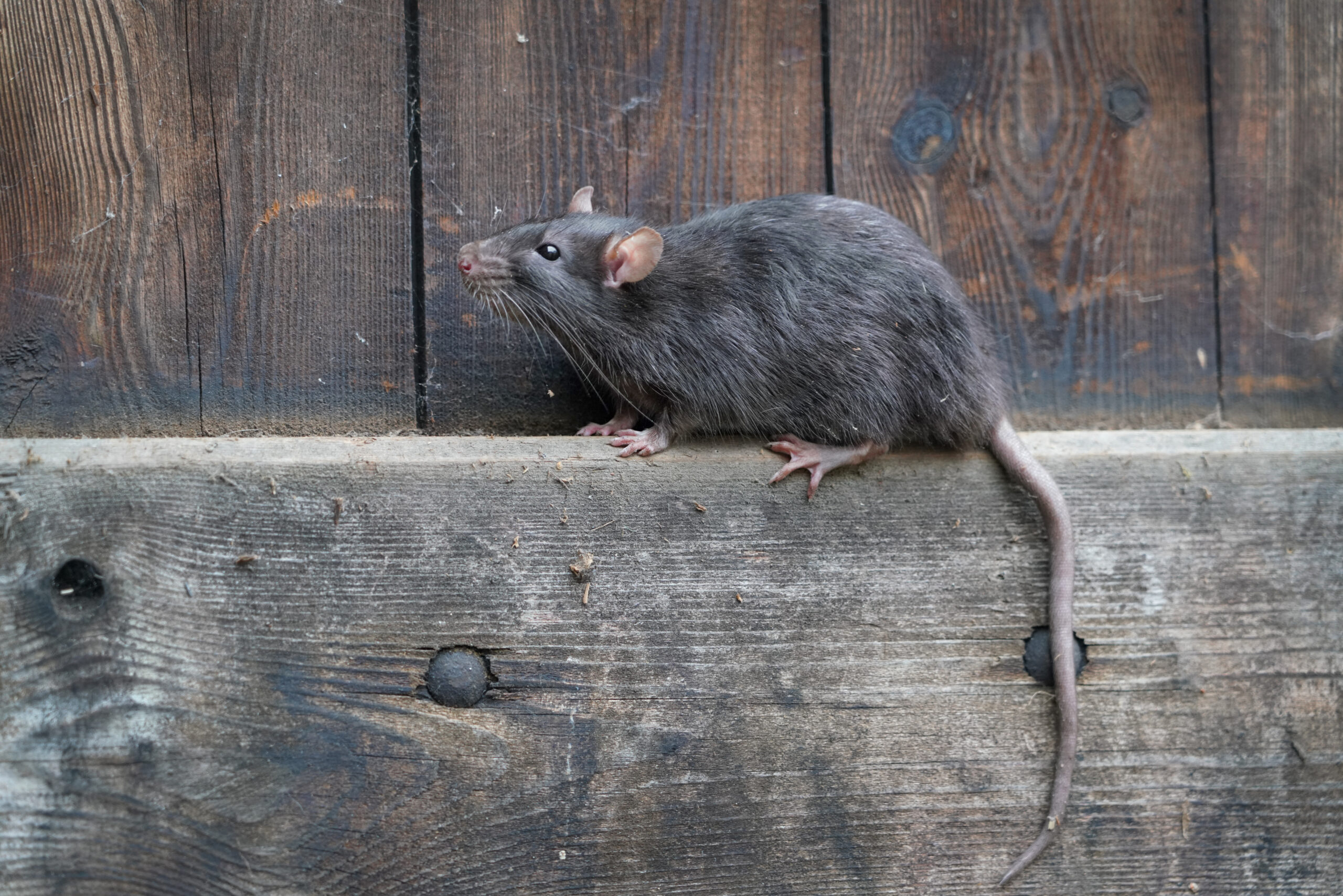ROOF RATS
Your Rats Problem, Gone For Good, Guaranteed.
Request a Callback
We’ll give you a call to discuss the best pest application for you:

DESCRIPTION:
___
The Roof rat is a thinner, more sleek-looking rat than the Norway rat, with its tail noticeably longer than its body length. Its nose is more pointed, its ears are larger in relation to the head, and its fur is a much darker brown color. It is usually black to light brown in color with a lighter underside. A typical rat will be 6–8 inches long. It prefers to nest above ground level, in structures or foliage, perhaps as a way of distancing itself from the Norway rat, which is the more dominant of these two species. Roof Rats can enter through an opening no wider than half an inch. Preferred foods may include snails, nuts, grains, and fruit, so nicely landscaped yards are a preferred environment. Other names for this rat are Climbing Rat, House Rat, Black Rat, and Fruit Rat. Rats are somewhat color blind.
BIOLOGY:
___
In a suitable environment it will breed throughout the year, with a female producing three to six litters of up to ten young. Females may regulate their production of offspring during times when food is scarce, throwing as few as only one litter a year. This rat lives for about 2–3 years. Social groups of up to sixty can be formed. Rats are capable of producing up to 25,000 fecal droppings each year.

HABITS:
___
Roof Rats can jump straight up about 2 feet and horizontally perhaps as much as 5 feet. “Gnawing” is an important habit of all rodents. Gnawing is used to gain access by chewing through walls, doors, or outer packages. Gnawing is used to access water by chewing through pipes, including outdoor irrigation systems. Gnawing is used to acquire nesting materials by chewing on fabrics. Gnawing is also used to eat, by chewing on hard materials such as bait blocks or walnut shells.
Rats do not like daytime activity, and if you see them out and about during daylight hours it may be telling you one of several things: that they are extremely used to you and have gotten bold, they are ill, or there are so many rats they have run out of hiding places. Rats are suspicious, and are more likely to avoid contact with new things in their environment.

